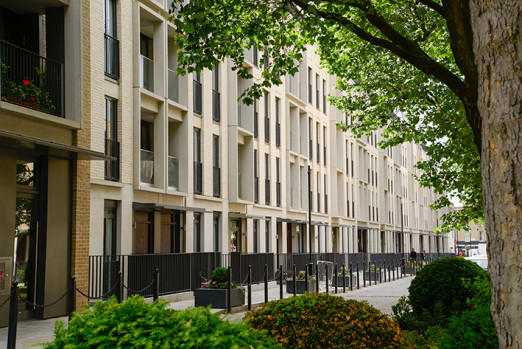As the largest Passivhaus development in the UK, this regeneration is unusual in that it is not a failing estate but one that could work better in how it meets resident needs, knits into the neighbourhood and meets sustainability objectives. New buildings and refurbishment are planned in a configuration around a new square and streets. The public realm within the site is more secure and better integrated with the surrounding areas.
The 18-storey Lulworth House will be stripped back to its concrete structure, a major store of embodied carbon, and then refitted to much higher standards.
A roof garden, part of a complex sustainable urban drainage system (SUDS scheme), enhances both the liveability of the space and its green building status. There is an emphasis
on front doors at ground level, opening onto the streets.
All existing residents are offered homes in the new development, while new housing for sale enables a cross-subsidy of funding to pay for the overall development
Client: Camden council and the residents of the Agar Grove estate
Architects: Hawkins\Brown with Mae
Landscape architects: Grant Associates
Planning consultant: CMA Planning
CGIs: Forbes Massie
Image: Hawkins\Brown

